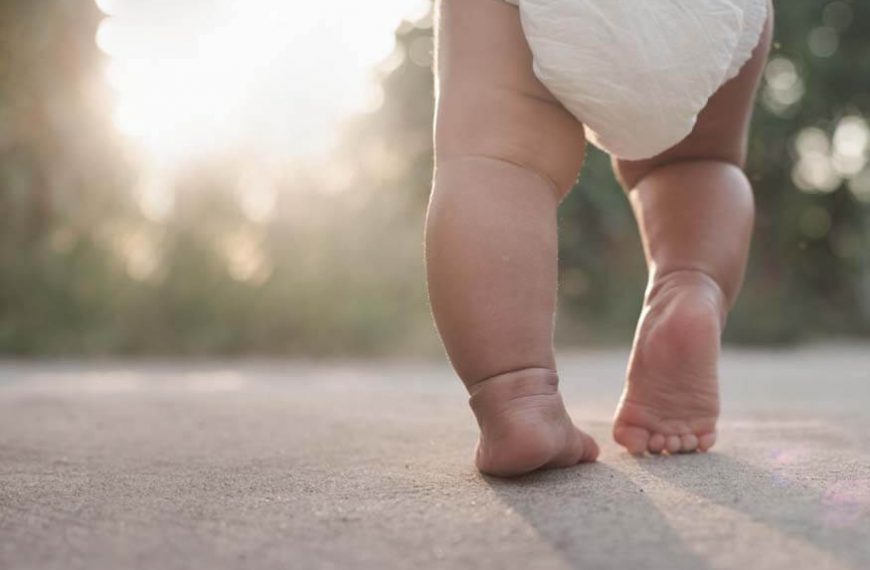Uncovering the True Causes of W-Sitting, Toe-Walking, and Bedwetting
There’s no doubt that bringing your child into this world is nothing short of a miraculous feat!
But what’s equally fascinating is watching your little one grow.
You can’t help but feel your heart swell 10x in pride as you watch them discover their tiny toes in wonder!
It’s truly a joy to behold, isn’t it? But alas, sometimes dark clouds can loom over your joy, halting it in its steps and making you do a double-take to check if everything is okay with your child.
Some of these dark clouds hit in the form of seemingly harmless problems such as toe-walking, w-sitting and/or bed-wetting.
Wondering what causes them? Let’s dig a little deeper!
W-sitting: Causes and Consequences
Let’s start with w-sitting. You’ve seen your child often sit this way when playing and to be frank, it’s normal for a growing child to use this position as it offers them greater support. Children aged 3 or so do this quite often and it’s normally not an issue.
However, if this behavior persists beyond the age of 6, there might be some cause for concern. Especially if your child chooses to sit this way more often than rarely.
The primary cause of w-sitting is a weak core. According to a recent study, children who w-sit for a prolonged period of time had a forward tilt in their pelvic region along with an internal hip rotation when they stood up after.
This could also make them more prone to certain other conditions such as orthopedic disease, back pain, poor sitting balance, hip weakness, delayed development milestones and the like. It’s best to get it checked out in such cases so you can mitigate its aftereffects.
However, a weak core isn’t the only cause of w-sitting. There’s another cause which we’ll get to a little later in this post.
Causes of toe-walking
First things first. Let’s talk about what toe-walking is. Though the name might make you believe that toe-walking involves walking only on toes, walking on the balls of one’s feet also falls under its purview.
Children who are just learning to walk will often walk this way. But again, this becomes a problem if they do not outgrow toe-walking as they get older.
So if we talk about the causes of toe-walking in toddlers, it’s just them discovering the ability to walk for the first time. However, in kids aged 2 and above, toe-walking, though mostly idiopathic (i.e. occurring without any specific, known cause) could be indicative of an underlying issue. This could cover a number of things such as cerebral palsy, neurological conditions, an abnormality of the spinal cord or muscular dystrophy.
But just like w-sitting, toe-walking also has another cause, which is seldom talked about. And we’re getting to that soon now. So hang in there!
Bedwetting: What causes this?
One of the more common problems in this list – bedwetting is not totally unheard of, even for older kids. And we’re talking about those in the ballpark of 10-12 year olds.
In fact, bedwetting has both physiological and psychological causes behind it. Physiological causes can be not feeling the urge to urinate before bed or having a frequently full bladder at night among others. It could also be a sign of constipation or diabetes.
As for the psychological causes of bedwetting, stress plays a major role. Say if your kid is having a tough time at school or is experiencing a trauma of some kind, it can manifest itself as bedwetting at night.
But then again, there could be another deeper cause – one that can be held responsible for all the three problems above, be it w-sitting, toe-walking or bedwetting.
A bit too curious now? Well, here it is!
The role of reflexes in w-sitting, toe-walking and bedwetting
Before we begin, let’s define what is a reflex –
An automatic action or movement that’s involuntary and is a response to an unprecedented stimulus is known as a reflex.
We’re all born with reflexes. We even die with them. However, our response rate to stimuli and the type of reflexes we exhibit may vary depending on the stage of life we’re in.
Yes, what you’re thinking is true. That does mean there’s more than one type of reflex. But for this discussion, we’ll be restricting ourselves to primitive reflexes.
What are primitive reflexes, you ask?
Primitive reflexes are those involuntary responses that develop in-utero or just after birth and are present in a newborn to facilitate survival. They are motor responses and it’s fair to call them a baby’s defense mechanism.
Remember how your baby used to lift up their arms and throw them back after hearing a sudden loud noise? That’s just an example of a primary reflex. Generally, as children develop and get older, they outgrow primitive reflexes.
However, in certain cases, primitive reflexes may linger longer than they’re welcome, causing certain developmental issues in your child.
For example, the Spinal Galant Reflex which helps babies descend during childbirth can be the cause behind bedwetting if it persists beyond its usual age bracket of 3-9 months. That’s not all. It can also cause posture issues, poor short-term memory and fidgety behavior.
As for w-sitting, the reflex known as STNR or Symmetric Tonic Neck Reflex may be responsible. This reflex develops during the first 6-9 months of a toddler’s life and disappears by the time they’re 9-10 months old. However, if this reflex is prolonged, studies show it can cause poor hand-eye coordination, trouble concentrating, poor muscle tone and w-sitting.
Lastly, the Tonic Labyrinthine Reflex or TLR is another primitive reflex that helps infants with head alignment and keeping their posture stable as they lie down. This reflex too disappears after the first 6 months of age. If it stays though, it has been known to cause delayed development and issues such as ADHD, hunched posture, motion sickness and gait problems such as toe-walking.
That was fascinating to learn, wasn’t it? We at EuroKids want to help you out in detecting early childhood development troubles to the best of our abilities. Our trained and skilled staff is always ready to have in-depth discussions with you about the issues your child faces in the classroom so you can get an idea of the best steps to take for your kids. For more information, visit your nearest EuroKids center.















